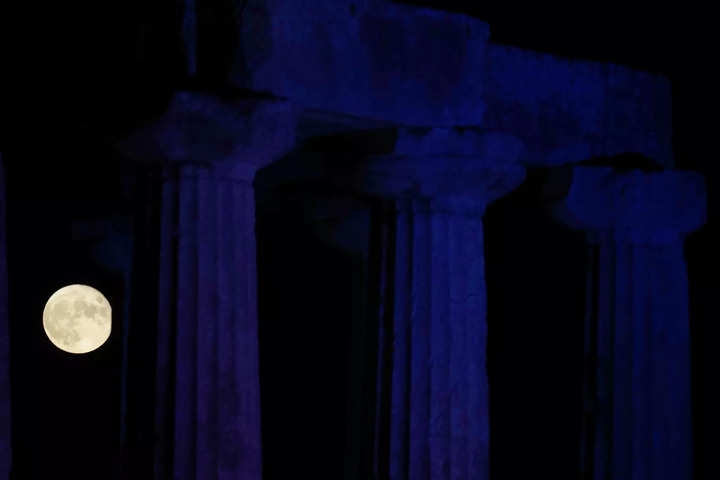

Scientists have found the primary definitive proof that the Moon inherited indigenous noble gases of helium and neon from the Earth‘s mantle.
The invention, revealed within the journal Science Advances, provides to the already sturdy constraints on the at the moment favoured “Big Affect” principle that hypothesises the Moon was shaped by a large collision between Earth and one other celestial physique.
It additionally represents a major piece of the puzzle in direction of understanding how the Moon and, doubtlessly, the Earth and different celestial our bodies had been shaped.
For the research, the group ETH Zurich analysed six samples of lunar meteorites from an Antarctic assortment, obtained from NASA. The meteorites encompass basalt rock that shaped when magma welled up from the inside of the Moon and cooled rapidly.
They remained coated by further basalt layers after their formation, which protected the rock from cosmic rays and, significantly, the photo voltaic wind. The cooling course of resulted within the formation of lunar glass particles amongst the opposite minerals present in magma.
The group found that the glass particles retain the chemical fingerprints (isotopic signatures) of the photo voltaic gases: helium and neon from the Moon’s inside. Their findings strongly help that the Moon inherited noble gases indigenous to the Earth.
“Discovering photo voltaic gases, for the primary time, in basaltic supplies from the Moon which can be unrelated to any publicity on the lunar floor was such an thrilling consequence,” mentioned Patrizia Will from ETH Zurich.
With out the safety of an environment, asteroids frequently pelt the Moon’s floor. It probably took a high-energy impression to eject the meteorites from the center layers of the lava stream much like the huge plains generally known as the Lunar Mare.
Ultimately the rock fragments made their solution to Earth within the type of meteorites. Many of those meteorite samples are picked up within the deserts of North Africa or in, on this case, the “chilly desert” of Antarctica the place they’re simpler to identify within the panorama.
Understanding the place to look inside NASA’s huge assortment of some 70,000 authorized meteorites represents a significant step ahead.
“I’m strongly satisfied that there can be a race to check heavy noble gases and isotopes in meteoritic supplies,” mentioned ETH Zurich Professor Henner Busemann.
He anticipates that quickly researchers can be searching for noble gases reminiscent of xenon and krypton that are more difficult to establish. They may also be looking for different unstable parts reminiscent of hydrogen or halogens within the lunar meteorites.
“Whereas such gases usually are not essential for all times, it will be fascinating to know the way a few of these noble gases survived the brutal and violent formation of the moon. Such data may assist scientists in geochemistry and geophysics to create new fashions that present extra typically how such most unstable parts can survive planet formation, in our photo voltaic system and past,” Busemann mentioned.
FbTwitterLinkedin






